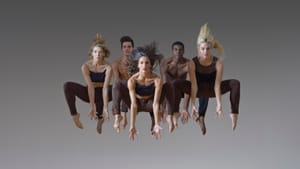Stay in the Loop
BSR publishes on a weekly schedule, with an email newsletter every Wednesday and Thursday morning. There’s no paywall, and subscribing is always free.
Come for the drones, stay for the hand dance
NextMoveDance presents David Parsons Dance Company

When I heard NextMove Dance was bringing David Parsons Dance Company to the Prince Theater, and that company founder and choreographer Parsons would premiere a dance with drones created in collaboration with Youngmoo Kim’s ExCite Center at Drexel University, I had to be there. Kim’s work brings arts and technology together, nowhere more than in the world premiere of The Machines. The company’s cofounder, Tony award-winner Howell Binkley, is a master lighting designer, so Parsons had plenty of experience integrating technology into his choreography.
Welcome to the machines
I love drones, but the very name carries the uneasy shadow of lockstep workers, mechanically repeating dull tasks in soul-destroying servitude. What would Parsons do with them? Alas, not as much as I had hoped.
The dance, with music by John Mackey, began well. There appeared to be a number of lighted drones on the darkened stage. When the lights came up, they revealed two large drones and a number of dancers whose arms, highlighted in the darkness, created the effect of additional machines.
The actual drones, with strips of landing lights that evoked the movie Close Encounters of the Third Kind, hovered overhead with occasional dancelike tilts from side to side and front to back. But were these alien artifacts friends or foes? The dancers sometimes seemed bowed under them, driven in by the drones that at other times seemed curious about these strange humans.
Parsons said he envisioned developing the choreography to include more dancers and drones relating more directly. But they still have some technical problems to solve. Smaller drones are agile, but for the stage they must be large enough to be seen in the back row. Swarms of smaller drones can perform breathtaking feats of synchronized movement but increase the risk to dancers, who were already working with a net and safety glasses. I consider The Machines a fascinating glimpse into a unique choreographic process rather than a finished work. And the next time the Parsons Dance Company comes to town, I will be first in line to see how Parsons, ExCite, and Howell Binkley solve these problems in their brave new world.
Light, dancers, action!
The dances that followed again highlighted the collaborative nature of Parson’s choreography, this time with light. Finding Center, with music by Thomas Newman, found the dancers performing in front of columns of light rising like a Grecian temple in the background, or isolated in the spotlight for more intimate moments, including a particularly moving pas de deux.
Hand Dance had the audience laughing. On a stage completely dark except for the light on their disembodied hands and forearms, the dancers created shapes — a snaky roller coaster, a ramp to heaven — and hand-danced to hoedown music arranged by Kenji Bunch. It was delightfully surprising.
My favorite piece was Parsons’s Caught, with music by Robert Fripp (of King Crimson fame). On a darkened stage, a single male figure (Ian Spring) danced while a strobe, like the flash on a camera, alternately lit the dancer in bright gray-white light or left him in darkness. In some moments, it seemed we were looking at a black-and-white photo of the dancer caught midleap. In other moments, he seemed to walk on air, and in still others, to disappear from one side of the stage and reappear on the other as if by magic. The dance required precise coordination between the dancer and the person controlling the strobe. Each leap appeared at its peak, and at no moment did the strobe catch the dancer’s foot on the floor. It was a stunning tour de force of technique. If I had not seen it, I would have said it was impossible.
Two dances did not so clearly rely on the interplay of light and choreography. Parsons’s In the End was a dance party set to music by the Dave Matthews Band. It was fun and reminded me a bit of Jerome Robbins’s Opus Jazz, but with the music and moves (and blue jeans) of a later era.
Almah, by guest choreographer Katarzyna Skarpetowska, with commissioned music by Ljova, and lighting by Burke Brown, had a folkloric feel enhanced by Naomi Luppescu’s costumes. The dancing was by turns cheerful and wistful. At one point I thought, “This section could have come from an old western movie.” Then I remembered that, like Ljova, many of the composers for those films came from Russia and incorporated Russian folk tunes into their depictions of Americana, a reminder that our own far-flung roots once grew in far-off soil.
What, When, Where
NextMove Dance presents Parsons Dance Company. December 7-11, 2016 at the Prince Theater, 1412 Chestnut Street, Philadelphia. (215) 422-4580 or princetheater.org.
Sign up for our newsletter
All of the week's new articles, all in one place. Sign up for the free weekly BSR newsletters, and don't miss a conversation.

 Camille Bacon-Smith
Camille Bacon-Smith